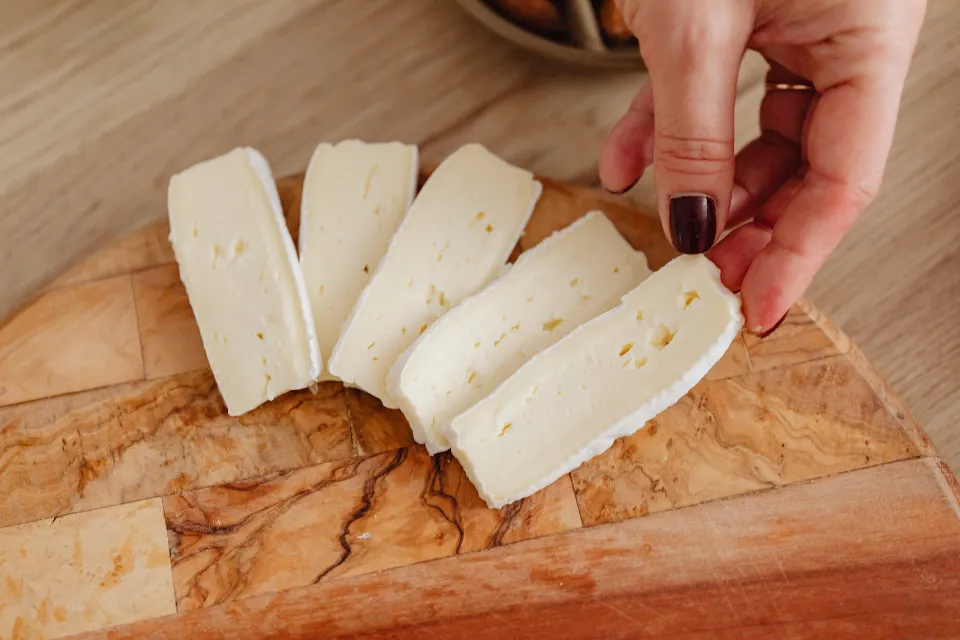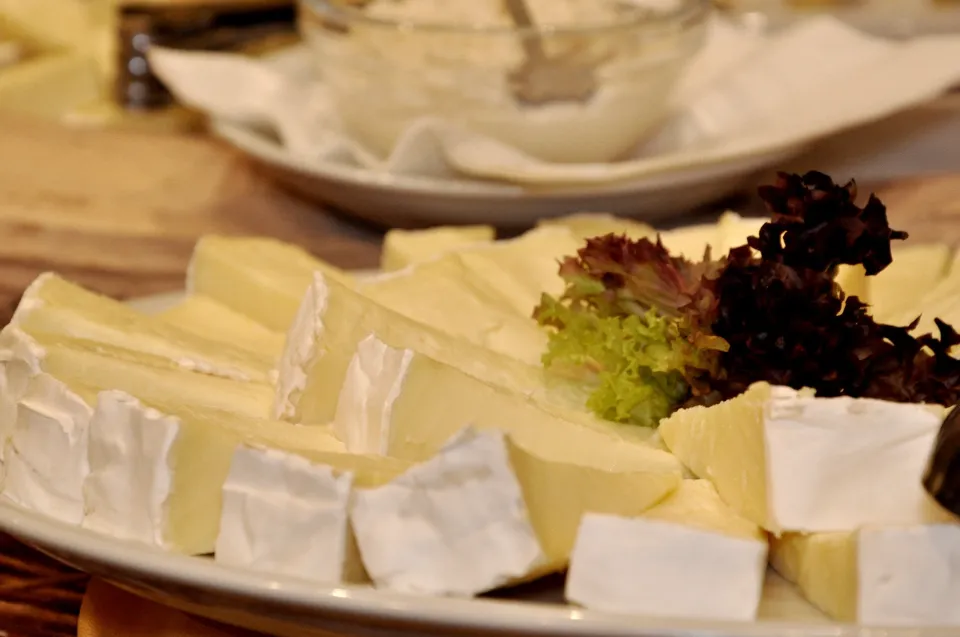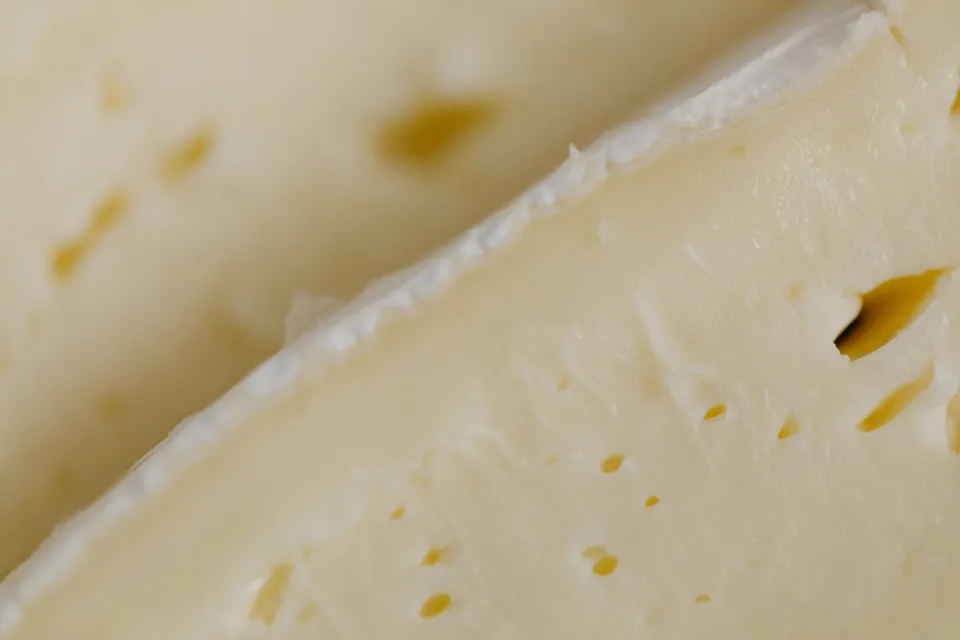Brie cheese is one of the best-known French cheeses all over the world, it is also known as “The Queen of Cheese”.
Brie cheese is a soft, creamy, buttery cheese traditionally made from cow’s milk, but some varieties of it use goat’s milk. Its flavor varies depending on the ingredients added while producing the cheese.
If you are interested in Brie cheese, just keep reading and you’ll get more information about it.

What is Brie?
Brie is a soft-ripened, off-white cheese that is typically made from cow’s milk. It has a white mold rind that is bloomy and prized for its flavor. The soft farmhouse cheese known as Brie has its origins in Seine-et-Marne, France. Rich, buttery, fruity, and getting more earthy as it ages, brie has a flavor all its own. The substance is runny and creamy and smells strongly of earth.
Since it’s made with raw milk, authentic French brie isn’t allowed to be imported into the country and would need to be aged for at least 60 days to be allowed in. importation. Unfortunately, that much time would cause the brie to become too ripe to eat. However, France does export stabilized brie that is sold in the US. It is a soft-ripened cheese that is typically made from cow’s milk and sold in rounds. It has a creamy-white interior and a white rind. French brie that has been stabilized is cut before it has fully developed, increasing its shelf life. The taste is buttery, rich, and smooth like a classic French brie made from raw milk; as it ages, it develops a hint of fruitiness and a more savory undertone. In general, pasteurized milk brie has a milder flavor than traditional French brie. They are widely consumed and made elsewhere, including in the United States. Brie is readily available, reasonably priced, and produced domestically and internationally using pasteurized whole, skim, and goat milk.

How Brie is Made
Raw cow’s milk can be pasteurized or left unpasteurized to make brie. To help the milk thicken and curdle, enzymes and rennet are added. The whey is removed before the curd is cut into pieces and ladled into molds of various shapes. To allow the rind to bloom, the cheese is salted and then allowed to rest for a week. In about four weeks, brie is typically ready.
Brie Vs. Camembert
Both Brie and Camembert are soft-ripened cheeses made from cow’s milk that have delectable white mold rinds. Although their flavors are similar, Camembert has a richer flavor with a funkier aroma and brie is milder with notes of creamy and butter. Camembert rounds are 5 inches in diameter whereas Brie wheels are 9 or 14 inches in diameter. Brie also has a higher milk fat percentage than Camembert.

Uses
Brie is a welcome addition to a cheeseboard and is best enjoyed with fruit, nuts, baguette slices, crackers, and cheese at room temperature. Brie also bakes well, whether it is baked by itself or in pastry; pair it with bread and fruit. Slices or chunks of brie can be melted and used in gratins, casseroles, sauces, paninis, grilled cheese sandwiches, and pizzas.
Storage
Brie should be kept cold in its original container until you’re ready to eat it. For the best flavor and texture, let the cheese sit at room temperature for about an hour. Once the package has been opened, wrap it in the original packaging, wax paper, and then tightly wrap it in foil or plastic wrap for up to two weeks.
Check the brie before consuming it. The disc ought to feel full inside its container or box, and its rind ought to be clean and white. Watch out for brown or slimy spots that are wet.
Additionally, brie can be frozen for three months. When freezing wedges, completely squish the air out of the bags and wrap them in plastic wrap or foil. Before using the cheese within two days, let it defrost overnight in the refrigerator. The best applications for brie are in cooked dishes because freezing may slightly alter its consistency.
Substitutes
You can use Camembert, Saint-André, Brillat-Savarin, or Mt. Tam in place of Brie if you prefer a creamy, soft-ripened cheese with a bloomy rind.

Final Thoughts
Brie is a well-known creamy, soft-ripened cheese with a bloomy rind and a flavor that ranges from mild to robustly earthy. At room temperature or baked, it can be consumed. Camembert, Saint-André, Brillat-Savarin, or Mt. Tam cheese can be used in place of Brie in recipes.
Related Reading
Everything You Need to Know About Grana Padano Cheese
FAQs
How Does Brie Cheese Taste?
Brie has a mild, buttery and creamy taste which is what makes it so versatile to pair and cook with. If you’re new to Brie, we recommend enjoying the cheese with its rind, in order to appreciate the subtle nuances in its flavor. Often people think that the rind on Brie isn’t edible, but this isn’t true.
What Is Special about Brie Cheese?
Brie is a soft cow’s milk cheese that originated in France but is now popular worldwide. It’s pale yellow with an edible rind of white mold. What’s more, brie has a creamy texture and unique, mild taste and aroma that’s characteristic of mold-aged cheeses. It’s usually served with bread, crackers, or fruit.
Do You Eat the Skin on Brie?
Yes, the bloomy rind is completely safe to eat and even keeps the inside safe from any potentially unwanted microorganisms during production. The rind on Brie not only protects and encases the cheese – it also adds a subtle, earthy flavor. With a soft and tender texture, it is meant to complement the paste inside.


